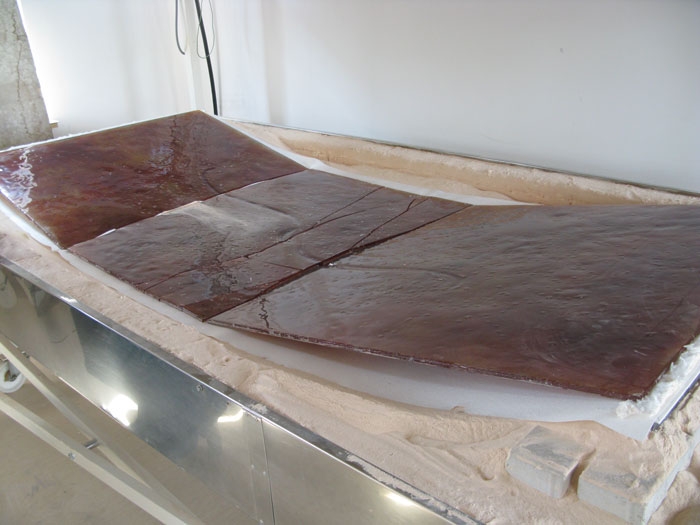Glass panel has cracked in the kiln! Again! Once again a failure, waste of time and money. And a disappointed client who's longing to see his brand-new, beautiful glass partition... It's not that bad if it happens at the beginning of the production process, but sometimes it happens in the last phase, during the final firing. There is nothing more frustrating! But there is always a bright side of every disaster. It can be easly transformed into our success! Let us explain how to do it
How to make a fused glass panel?
Part 1 (to be continued ... Maybe?)
Most of the failures happens when we want to put into practice some innovative ideas, not known or tested. In second attempt we will elliminate the mistake and certainly will gain a great lesson allowing us to improve our glass-making skills. Unfortunatelly sometimes we cannot avoid repeating the same mistakes and prevent another spectacular disaster.
How to reduce the number of our mistakes to a minimum.
The answer is: The Kiln Log Book.
The "log book" idea is simple. Every firing is meticulously described. Every description goes to our archives and when it comes to execute a similar glass work we can read it. Our note will be a priceless help then. If the described firing was succesful, we can go ahead and repeat the same firing schedule (or add some improvements). But if the firing was a disaster we should think it over once again and try to figure out how to modify the firing parameters. (temperature, timing etc.).
Every following firing will be a source of knowledge on condition that everything will be described in our book.
After years the 'kiln log-books' becomes our greatest treasure. Interesting fact is that its content is extremely important for us, but probably unuseful for anyone else. Because every kiln is different, with different controllers and different temperature inertia. Also, every type of glass has its particular characteristics. Keeping a log requires a systematic and careful approach. But it's definitely worth it!
In the 'kiln log-book' we obligatory write down:
1. Before turning the kiln on:
day, client data, glass dimensions, thickness, layers quantity, type of glass, kiln lining, temperature and time schedule, additional glass techniques - type of pigments, paints and other components
2. After the firing
The final effect (eventual damages)
3. Unusual incidents during the firing process
e.g. power outage, lid opening (intentional or not)
Despite all this efforts, the failures in our job still happens. The reason is our openness to experiences. We love to cooperate with the most creative and demanding customers and execute unusual glass objects requiring new technologies. We've come to terms with the failures. That's why we've bought two waste containers recently - each one can carry up to 1 tonne of glass.
Image Gallery
https://www.witraze.info/en/1158-how-to-make-a-fused-glass-panel#sigProIddf671a53f7





Leave a comment
Prosimy o wypełnienie wszystkich pól oznacznych (*).
Make sure you enter the (*) required information where indicated.